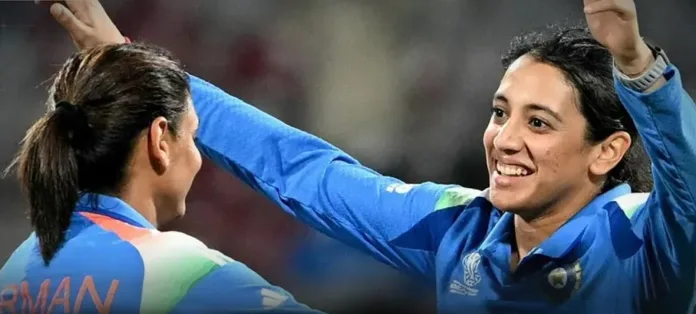Jemimah Rodrigues’ unbeaten 127 leads India to a record-breaking World Cup final berth
Under the floodlights of Navi Mumbai’s DY Patil Stadium, Jemimah Rodrigues produced one of the greatest innings ever seen in women’s cricket — a masterclass of composure, courage, and belief that carried India to a record-breaking World Cup final.
Her unbeaten 127 powered India to a jaw-dropping chase of 339 against defending champions Australia, the highest successful run chase in women’s one-day international history. As the final boundary was struck by Amanjot Kaur, Rodrigues fell to the ground, overcome by exhaustion and emotion.
For the millions watching, it was more than just a victory — it was a defining moment for the women’s game.
What makes her performance even more remarkable is the journey leading up to it. Barely 11 days earlier, Rodrigues had been dropped from the side that lost narrowly to England. Few would have predicted that she would return to deliver an innings that redefined the possibilities of women’s cricket.
At the post-match conference, Rodrigues revealed that she had “cried almost every day of the World Cup with anxiety”. Known for her infectious energy and smile, she exposed a rawer side — one marked by pressure, vulnerability, and sheer grit.
Thursday’s thriller unfolded as another epic chapter in India’s long-running rivalry with Australia. Phoebe Litchfield’s elegant 119, alongside half-centuries from Ellyse Perry and Ash Gardner, had set up a formidable total of 338. At the halfway mark, Australia’s eight-year unbeaten run at 50-over World Cups looked untouchable.
Then came Rodrigues.
She batted with the poise of a veteran and the fire of a dreamer. Every flick, drive, and shuffle across the crease oozed precision and purpose. Her running between the wickets was electric, her placement ruthless, and her intent relentless. She found gaps no one else could see, dismantling the world’s most feared bowling attack with quiet ferocity.
Australia, normally unflappable, began to crack. Even the usually composed Alyssa Healy and Tahlia McGrath dropped straightforward catches. The reigning champions, unbeaten since Harmanpreet Kaur’s iconic 171 at Derby in 2017, looked stunned.
When Rodrigues struck her century, the roar inside DY Patil Stadium was thunderous — part celebration, part disbelief. By the time India sealed the victory, the noise had turned into euphoria.
It wasn’t just about cricket. It was about history, hope, and the transformation of a sport long overshadowed by its men’s counterpart.
Former IPL batter Abhishek Jhunjhunwala told BBC Test Match Special: “The pace at which women’s cricket is growing in India is unbelievable. Girls have started playing on the streets with boys. They want to be a Jemimah Rodrigues or a Deepti Sharma. If India go on to win this World Cup, it will change women’s cricket — commercially and culturally.”
Around Indian stadiums, the shift is already visible. Young boys now wear jerseys with Mandhana or Harmanpreet printed across the back. Entire families arrive hours early to catch a glimpse of the women in blue.
The Women’s Premier League (WPL) has already begun revolutionising the sport, offering players professional contracts, financial stability, and visibility on par with men’s tournaments. But this semi-final — this extraordinary run chase — could prove to be the spark that ignites a new era.
As India prepare to face South Africa in Sunday’s final, the stakes are far greater than a trophy. Both nations are chasing history, with a new world champion guaranteed for the first time since 2000.
For India, though, a win on home soil would carry seismic implications. It would not just crown champions — it would cement a cultural shift, inspire a new generation, and confirm that women’s cricket is not an offshoot, but a phenomenon of its own.
Jemimah Rodrigues once taped her photo over an India jersey as a child, willing herself to believe. On Thursday night, she didn’t just wear that jersey — she became its symbol.
